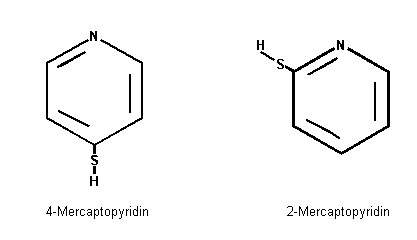Structure and characteristics of self assembled monolayers of mercaptopyridines

The isomeric mercaptopyridines 2-mercaptopyridine 2MPyand 4-mercaptopyridine 4MPy (see above) undergo irreversible adsorption on gold surfaces from aqueous electrolytic solutions forming adsorbate layers. These layers show typical characteristics of self-assembled monolayers (SAMs). SAMs of the two isomers show different abilities to extract Cr(VI) ions from aqueous solution. [I. Turyan and D. Mandler, Selective Determination of Cr(VI) by a Self-Assembled Monolayer-Based Electrode, Anal. Chem. 69 (1997) 894]. These associated ions can be detected electrochemically.
The aim of this project is to characterize the structure of these layers, the type and the strength of the interaction between the mercaptopyridine and gold and Cr(VI) ions by a combination of electrochemical (cyclic voltammetry, Tensammetry) and spectroscopic methods (in situ surface enhanced Raman spectroscopy (SERS)). In cooperation with D. Mandler, Hebrew University, Jerusalem, Israel, the application of such adsorbates for Cr(VI) analysis will be examined. In addition, the possibility of extraction of similar ions can be studied. For comparison SAMs will be formed on gold colloids of different defined sizes and characterized with SERS. From this study we want to get information about surface enhancement mechanisms and particle size effects which are related to the occurrence, type and extent of self-assembling.

SER spectra of 4-mercaptopyridine on a gold electrode (top: with chromate, bottom: without chromate).
